The Unstoppable Progress in the Georgian Wine Scene
Reading Time: [est_time] Georgian wine is back on our minds. It took 18 months of non-stop travel through known and lesser-known wine regions to produce our first wine book. The same time that we were planning to

Reading Time: 9 minutes
Georgian wine is back on our minds.
It took 18 months of non-stop travel through known and lesser-known wine regions to produce our first wine book. The same time that we were planning to release Uncorking the Caucasus, the United Nations World Tourism Organization (UNWTO) was hosting their inaugural Wine Tourism conference in Tbilisi, Georgia. With all these aligned, it was an easy choice to make: attend the conference, bring the book to its genesis, and return to the birthplace of our wine career (and arguably wine itself).
Georgia, the Host Country for UNWTO’s First Wine Tourism Conference
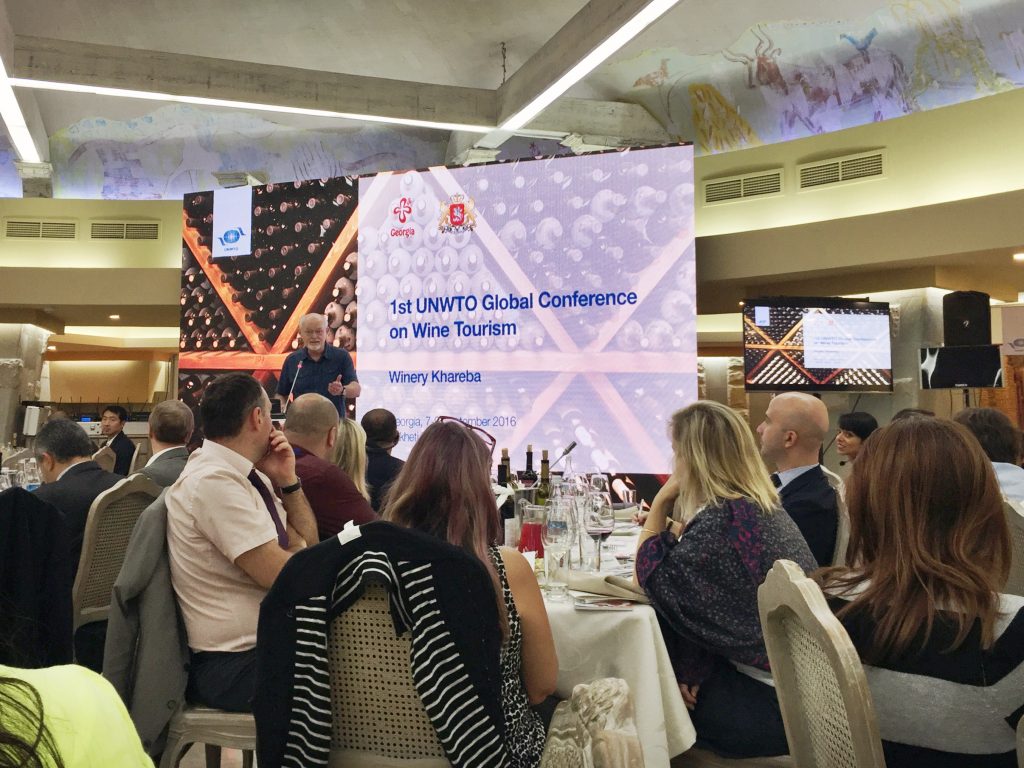
The Wine Economist, Mike Veseth, speaking at the 1st UNWTO Global Conference on Wine Tourism.
The UNWTO’s conference on wine tourism was attended by over 200 participants—predominantly journalists, winemakers, winery staff, tour guides, tour company owners, wine tourism promoters, and civil executives—from both the public and private sectors of around 40 countries. It was the organization’s first effort at executing a conference of such scale and theme so understandably there were some kinks to be worked out. For us, the networking element outperformed the learning.
One of the biggest highlights for us was meeting wine author and The Wine Economist, Mike Veseth. Anyone who is interested in the business of wine and what makes the wine world tick should check out Mike’s books.
The content-rich conference was unfortunately affected by the poor choice of venue and setup, which were not conducive to large-group discussions. Most of the takeaways for us were more anecdotal than actual scalable, executable insights. The Georgian wines and dishes presented to the participants were one-dimensional and we felt a personal, visceral indignation about that.
Overall, it was still a good effort and we were thankful for this new initiative by UNWTO to cultivate learning and sharing in wine tourism. We will continue to participate in as many of this wine conference by UNWTO as possible.
Now back to the subject of Georgia…
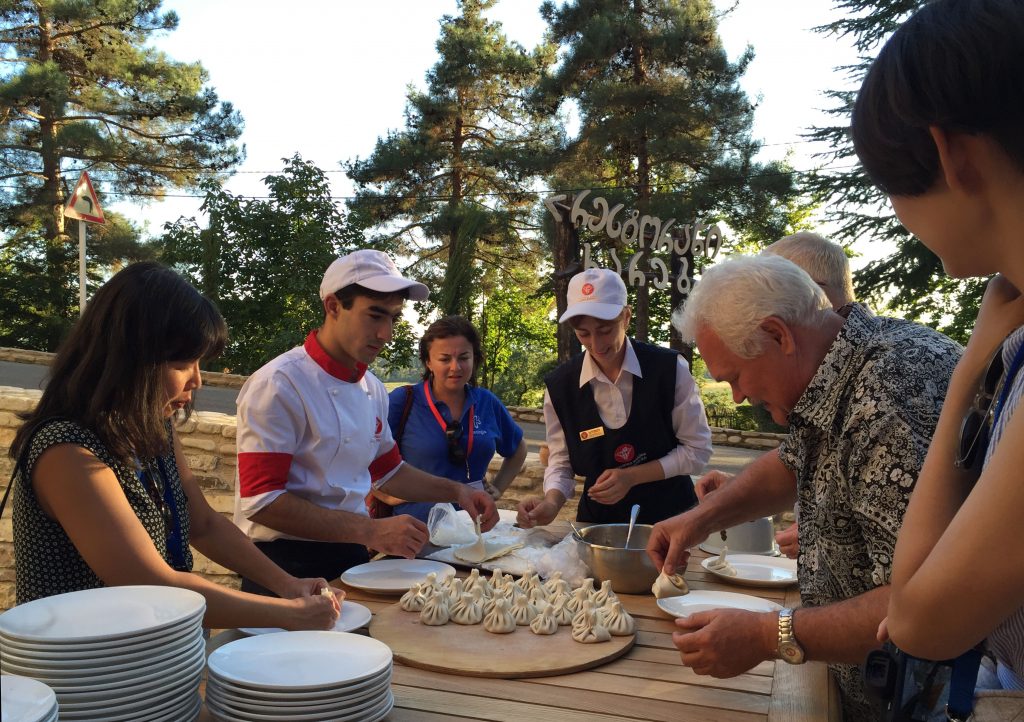
A visit to Georgia is never complete without a touch and taste of Khinkali, the Georgian dumpling. Thank you UNWTO for organizing these activities for us.
The Other Dimensions of Georgian Wine
During the three-day event, participants got to visit and taste wines from two big-production wineries and a monastery. While the quality of the wines from those producers can be good, there are other facets of this exciting wine country that need to be shared in order for a visitor to truly comprehend the identity of Georgian wine.
Following the conference, we spent another month in the country and tasted over 150 Georgian wines that either we had missed on our first foray into the country or were new vintages of the wines that we already tried. Here are a few observations of the Georgian wine scene, exactly one year after our first trip.
Improving the Quality of Georgian Wine
In Georgia, the small band of natural, qvevri wine producers continues to raise the bar for quality. Tasting through the newest vintages left us astonished. Many of the wines blasted through the preconceptions people may have of natural wines. They are not raw, rustic products. The wines are not funky and mousy, but alive and quirky.
Natural wine producers who make wine in qvevri account for a minute portion of Georgia’s total wine output—around 10%. Many of these producers are making very small amounts of wine, sometimes less than 3,000 bottles per year. These wines are already culturally significant; UNESCO named the practice of winemaking in qvevri as an Intangible Heritage of Humanity in 2013. Despite this, a faction of the local industry believes that Georgia should focus on conventionally made wines—often times in bulk—in order to increase efficiency, gain market power, and attain a certain economic potential. To us, the qvevri-style wines are what truly speaks Georgia. But with a tiny outreach, small production, limited economies of scale, and aging winemakers who care about making wine in an unapologetically traditional way, who knows what the future holds. Perhaps this is part of the perennial charm of Georgia too: that its magic can only be understood by those who care enough to make the journey.
Unique Varieties Continue to Emerge in Georgia
During the time when Georgia was part of the USSR, the Soviets favored two varieties: Rkatsiteli for white wine and Saperavi for red wine. Both grapes are able to deal with harsh conditions and can maintain high levels of sugar and acidity without correction. The Soviets were concerned with quantity not quality, so they pulled the other varieties and focus on these two. Thankfully, many families were able to maintain small plots of the other Georgian varieties. Because of these families and their modest oenologic time capsules, the country has so many unique grapes to offer the world today; and from these time capsules, the renaissance of indigenous varieties continues.
The variety that we completed missed on our first trip is the scarce Usakhelouri from a small pocket of the Lechkumi region. The total harvest for one season can be as low as two tonnes! Wines made from Usakhelouri are among the most expensive and legendary Georgian wines. Rumor has it that Stalin tried to keep this variety a secret and always shipped the grapes to Moscow. Usakhelouri makes naturally semi-sweet wines that have alluring notes of red fruit, forest floor, and earth. Even if you’re not a sweet wine lover, they’ll still be a special treat to taste.
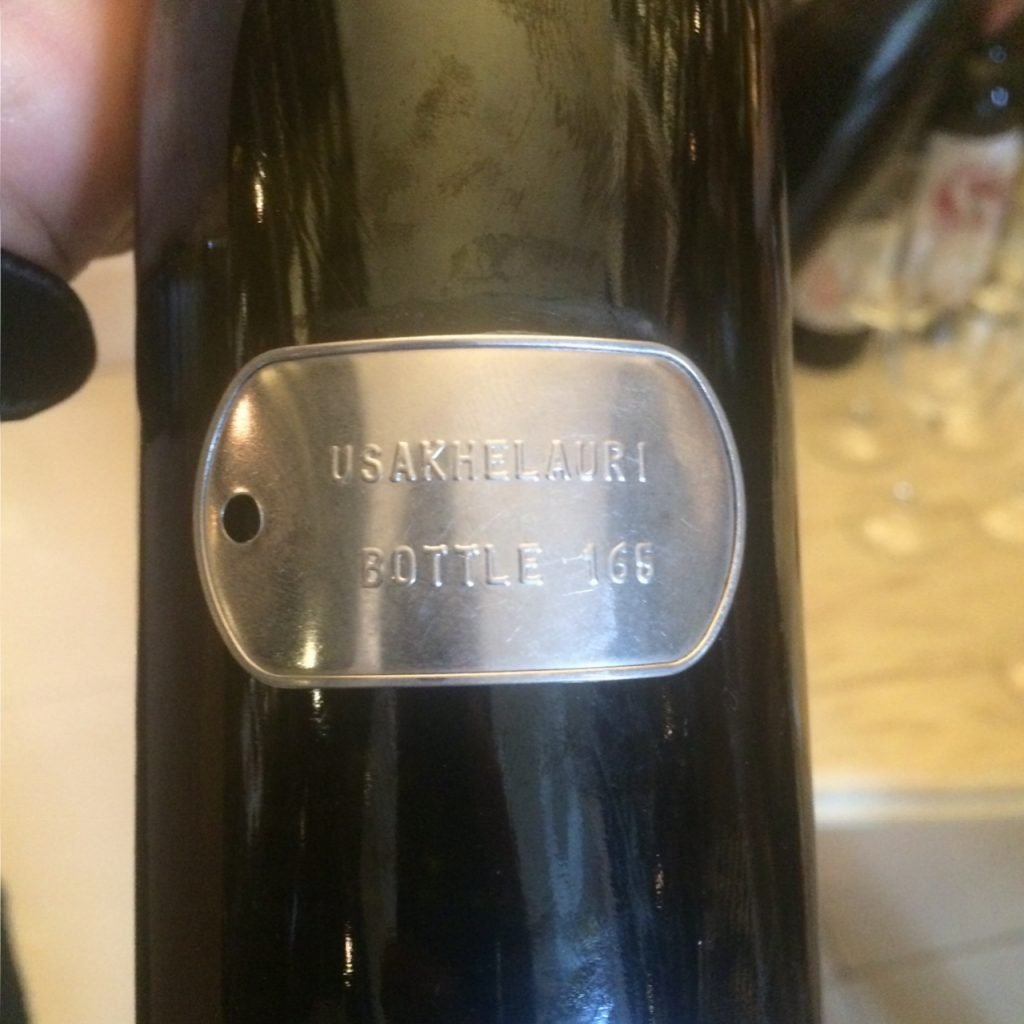
A naturally-semi sweet dessert wine made from Usakhelouri. There’s no other information about this wine besides what is indicated on this metal tag. We know nothing about it except it is made by a small family and it is delicious.
During our first visit to Georgia in the Fall of 2015, we had the impression that the variety Tavkveri was made mostly into rosé wine. This year, we got to discover many excellent Tavkveri varietal red wines, plus other reds made from fascinating local varieties with tuneful names like Ojaleshi, Shavkapito, and Chitisvala. The grapes from western Georgia continue to impress us: Aladasturi makes light and refreshing reds that can sometimes taste like Beaujolais Cru; Otskanuri Sapere is another variety hailing from the west and makes wines with mouth-puckering tartness.
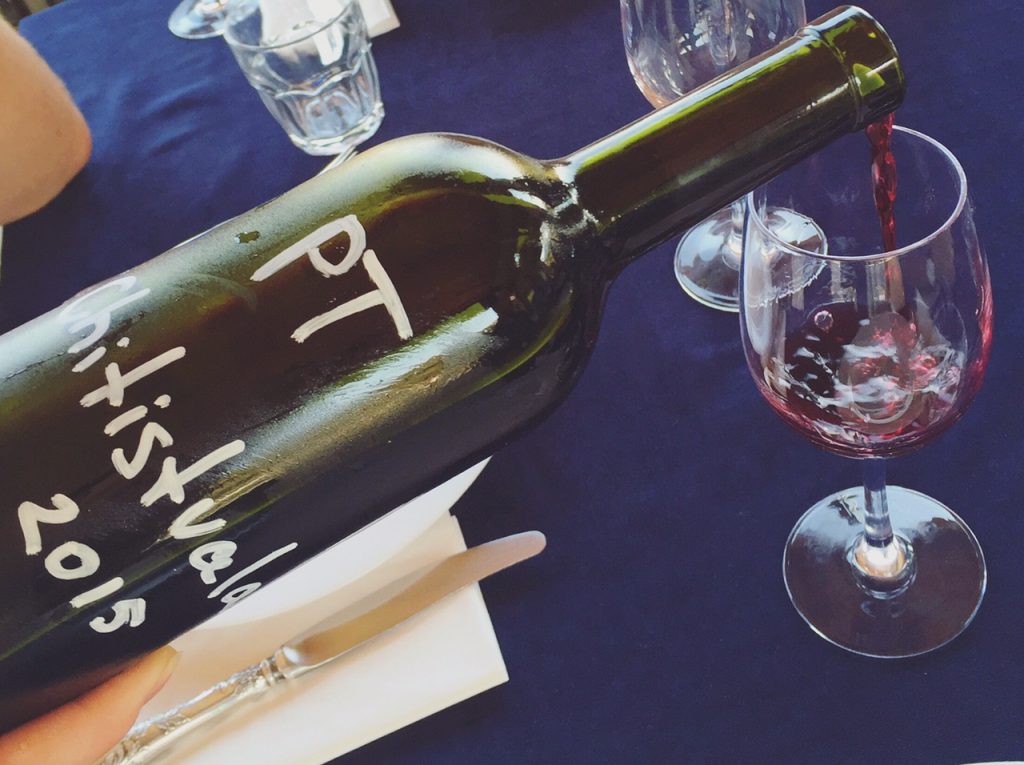
Tasting Pheasant’s Tears Chitisvala, made with grapes harvested from 200-year-old vines.
As for white grapes, wines made from Chinuri remain one of our favorites. Chinuri made in qvevri maintains a high level of juiciness, texture, and fresh fruit flavors as opposed to being nutty and dried-fruit tasting like most oxidative-style wines. Wines made from Khikhvi, Tetra, and Kisi, be they fermented in steel tanks or in qvevri, are also worth checking out.
For us, the boundary-pushing protagonists are Rkatsiteli and Goruli Mtsvane. The qvevri-style wines made of Rkatsiteli are structured and nutty with startling red fruit flavors. We were floored by some qvevri-style Rkatsiteli wines and believe they can be some of the greatest wines of all time. To fully comprehend Rkatsiteli as a variety, look out for the fresh and fruity ones made in steel tanks as well. Goruli Mtsvane is a showstopper; a late-ripening grape that oxidizes easily, only a few winemakers make wine from this rare variety. The examples that we had from Lagvinari and Soliko delivered high-toned aromas and weighty body reminiscent of a light red wine. Both are exemplars of wine that gives you energy as opposed to just another alcholic beverage that takes away energy.
Georgian Bubbles!
If a picture is worth a thousand words, what about a video?
Charine loves bubbles and so we were thrilled to see a new movement amongst the natural Georgian wine producers. The sparklers that these producers are making are not méthode traditionelle (think Champagne) or charmant method (think Prosecco). These sparklers are known as pétillant-naturel, colloquially shortened to pét-nat, which translates to naturally sparkling.
Pét-nats are made via méthode ancestrale, the precursor to the modern Champagne method. Méthode ancestrale made a resurgence in the ’90s in Loire Valley, France when the late Christian Chaussard discovered this sparkler-making method by chance and coined the new term pétillant-naturel for this style. Today, Christian’s good friend and Georgia’s frequent visitor Thierry Puzelat continues to make pét-nats that cheer the world.
Pét-nats are made with spontaneous fermentation and then bottled before the primary fermentation is finished, without adding more yeast or sugar. With the natural yeast and sugar left in the bottle from the first unfinished fermentation, natural carbonation starts to build up in the bottle.
This technique of making sparkling wine can be volatile and variable, requiring a high level of expertise and experience in the cellar. We’ve heard many stories about the hysterical beginning of Georgian pét-nats, which include dealing with flying corks and shattered glasses in front of the media and guests. [Don’t worry about drinking pét-nats now, they are past the experimental stage.] One winemaker recalled an accident where several bottles exploded in his cellar and his bleeding staff exclaimed, “We don’t like this French way of making wine!”
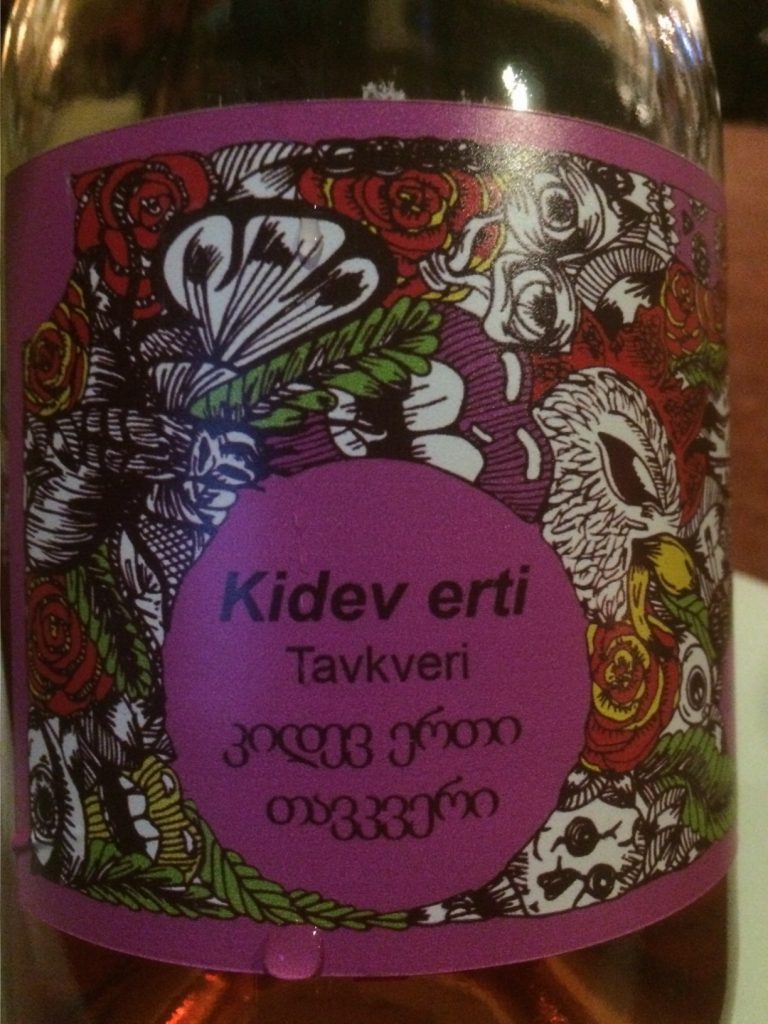
Pét-Nat Rosé made from Tavkveri by Vincente, a Frenchman living in Georgia.
So how do Georgian pét-nats taste like? Crisp and delicious with vibrant fruit flavors. They are not as yeasty as Champagne but well-made examples can have a fine, persistent bead of bubbles that rivals sparklers made in méthode traditionelle. Georgian pét-nats, as are most pét-nats from other parts of the world, are sealed with a crown cap instead of a cork. They are low in alcohol and make candid and lively crowd-pleasers. Pét-nats are meant to be consumed young as further aging in the bottle is not expected to contribute to the wine’s complexity. The wines are often cloudy as most are not filtered though there are also winemakers who choose to do disgorging. These wines are something to keep your eye out for as Georgian wine gains popularity worldwide. The Georgian pét-nats from Gotsa, Okro’s Wines, Pheasant’s Tears, and Kidev erti are excellent.
New Places to Enjoy Wine in the Capital City, Tbilisi
It is laborious to find places in Georgia that are non-smoking. Because of this, our default hangouts in Tbilisi are the alternative themed Vino Underground and the swanky g.Vino wine bars. If you’re a non-smoker like us, wine bars are always a safe bet, though you do lose the bet once in awhile. For restaurants, Azarphesha is a great place to taste Georgian cuisine and drink wine without the distraction of smoke. All these three places are must-visits for gastronomy lovers touring the country. An impressive selection of international natural wines—including those of Chateau Musar, Marcel Lapierre, and Matassa—are also available at Vino Underground and Azarphesha. During this trip, we discovered two new establishments that are shaking up the wine scene.
Outside of the old town and near the upscale neighborhood of Vake is a new wine bar and shop named 8000 Vintages. The shop carries wine from over 100 Georgian producers and always has a large selection of Georgian wines available for tasting. The place is managed by WSET-certified Zaza Grigalashvili who is eager and patient in helping patrons navigate the massive selection of Georgian wines. If you’re interested in learning more about Georgian wine, Zaza leads a weekly tasting class at 8000 Vintages in the Georgian language, though he does speak English.
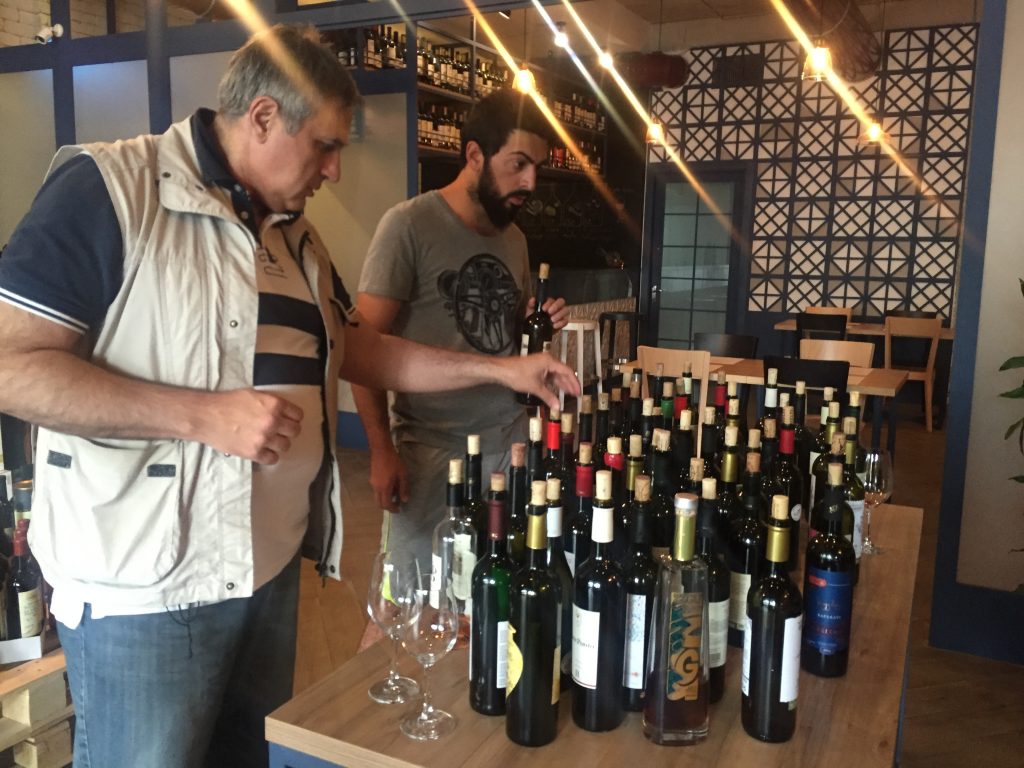
Visit 8000 Vintages in Tbilisi on any day and you’ll be welcomed with a wide selection of Georgian wines that you can sample.
Thanks to Zaza and his team, we had a tasting and book signing event at 8000 Vintages. The event was a success as we led a packed house through four wines and signed books afterward. The crowd consisted of wine lovers from all over the world, local winemakers, diplomats, and members of the expat social media platform internations.org.
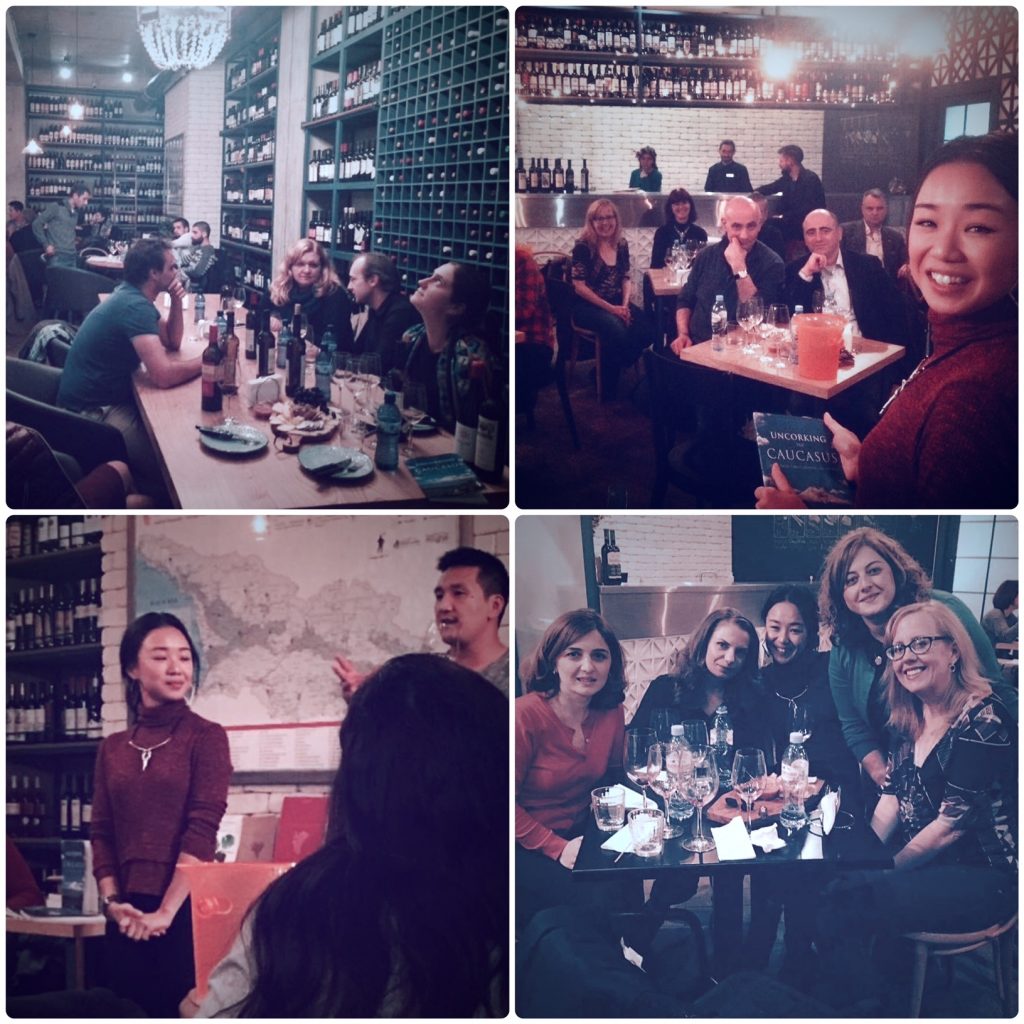
Fond memories from our book launch at 8000 Vintages.
There is a new and innovative restaurant in Tbilisi as well called Culinarium. It was featured on Anthony Bourdain’s show Parts Unknown. Chef Tekuna Gachechiladze has experience in the restaurant business carried over from places like New York and Hong Kong. Culinarium features Georgian cuisine with a modern twist in a hip yet unpretentious atmosphere. A small but satisfying selection of Georgian wines is also available. On Sundays, the restaurant does an Asian brunch with international takes on dishes such as hot and sour soup, dumpling, and Pad Thai. If you love Asian food or if you love amber wine, don’t miss the chance of tasting the pairing of both at Culinarium. Like champagne, we believe amber wine is the most food-friendly style of wine that can go well with just about any kind of cuisine, including spicy Asian food.
Georgia is a mecca for pure flavors, natural wine, and organic food. In a year, we’ve witnessed how the country evolved into an iconoclast in gastronomy. Georgia has so much freshness and purity to its credit that the lives conducted by the rest of us from modern cities seem tainted.
More Government Support, More Specialized Wine Tourism Operators
The wine industry is one of the most important sectors of Georgia’s economy. In 2014, the National Wine Agency of Georgia was established as an entity under the Ministry of Agriculture of Georgia with a mandate to aid in the development of the wine and wine tourism industries. This has led to a higher level of collaboration between the government and private sectors.
During our recent trip to Georgia, in the span of two months, there were two wine-centric events organized by the National Wine Agency. The construction of a wine museum is also underway.
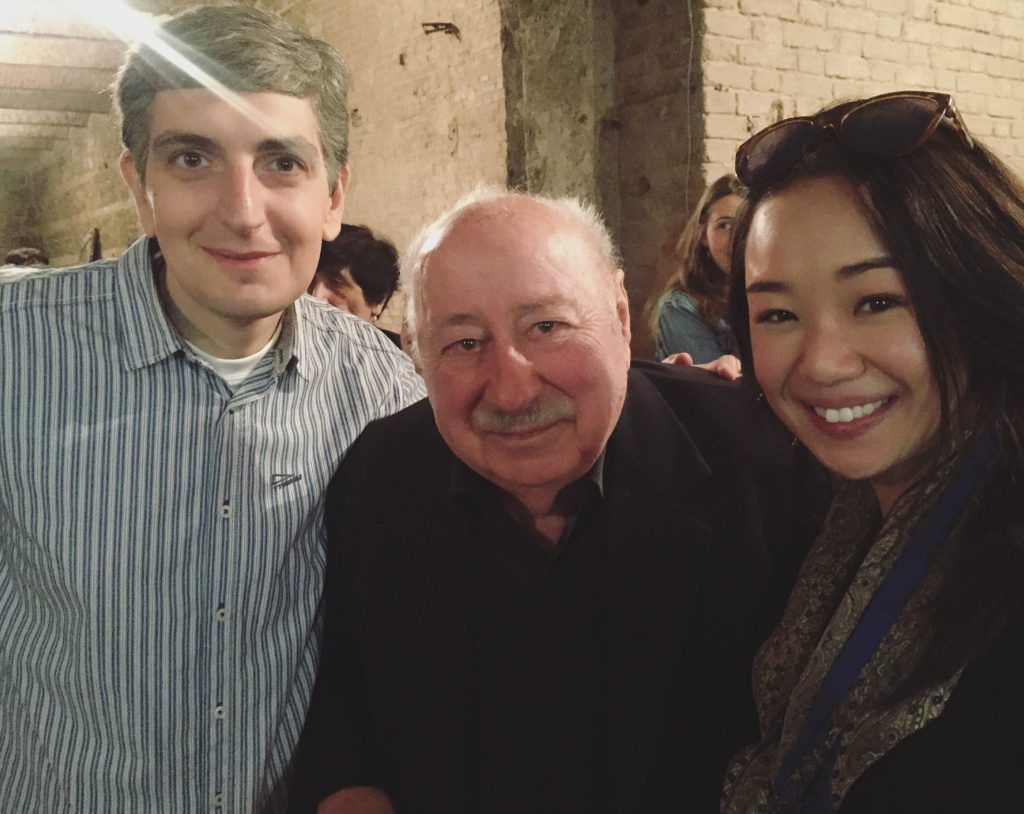
At one of the events organized by National Wine Agency. Charine met with Archil Natsvlishvili, from Kerovani Winery, and Givi Chagelishvili, Stalin’s last living winemaker.
Besides the local support, international government agencies such as USAID are also having their presence felt through their support in economic development. While they do not work directly with the wine sector, wine tourism is an indispensable product of the tourism and agricultural sectors, both of which are key generators in the sustainable economic development of Georgia.
“We are working on a regional tourism development initiative in Samtskhe-Javakheti, wherein we are facilitating public and private sector stakeholder mobilization and coordination, new product development, and regional marketing and promotion support. The expected result of this work will be the creation of a sustainable public-private destination management organization for the region that can coordinate and implement regional strategies for tourism development and regional promotion moving forward. More broadly, we are working to improve operational and marketing capacity of rural guesthouses in Samegrelo, Shida Kartli, Samegrelo, and the Pankisi Valley,” said Brian King, Chief of Party for the USAID Zrda Activity in Georgia, implemented by Chemonics International, Inc.
Further, there is also an uptick in specialized wine tour operators like Taste Georgia and Living Roots.
All these mean wine travel in Georgia is more accessible and more comfortable than ever before.
Disclaimer: The ideas expressed in this article are personal opinions and are not associated with any sponsors or business promotions.
Related:
1. Our Stint on Georgian National Television
John Wurdeman, the co-founder of Pheasant’s Tears winery is an advocate for traditional Georgian winemaking. He’s also a co-host of the mid-day talk show at Georgia Dream Studios. During our stay in Tbilisi, he invited us to be his guests and gave us the opportunity to talk about our book on the show. This was the first time that we had to work with translation in an interview and was thankful for John being a great steward of the conversations. You can see the 21-minute clip of our cameo below.
2. For a listing of Exotic Wine Travel’s articles and videos on Georgian wines and wine travel in Georgia, check out our page Uncorking the Caucasus. To purchase the Kindle or paperback copy of the book Uncorking the Caucasus: Wines from Turkey, Armenia, and Georgia, please head to this Amazon product page.
3. Humble Magic in Georgian Capital’s Restaurant Renaissance

